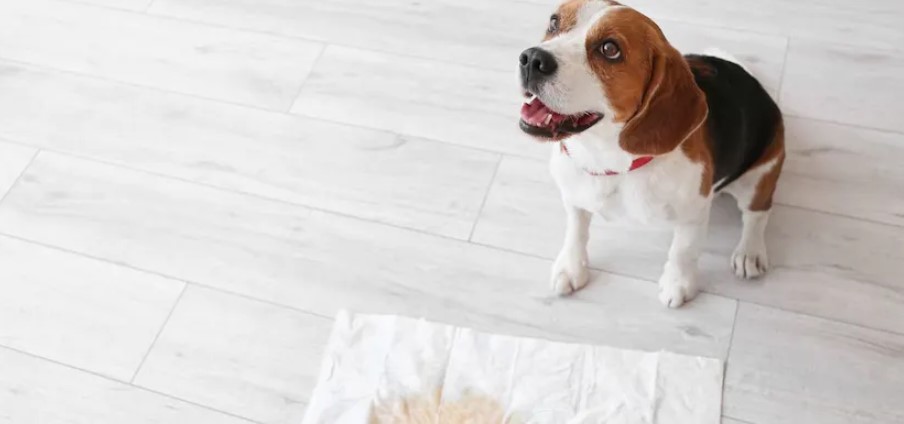As your canine companion enters their senior years, you may notice new behaviors, such as indoor urination or defecation. These actions may be indicative of the initial signs of incontinence in your older dog.
Exploring Solutions for Older Dogs
Incontinence, characterized by the loss of voluntary control over urination or defecation, prompts the question of how to address this issue and assist your aging pet. Doggie pee pads represent a valuable tool, allowing older pets to maintain their independence while keeping your living space clean.
If you’re wondering how to potty train an older dog, this article offers a step-by-step approach to teaching your senior dog to use pee pads indoors, enabling them to enjoy a high quality of life in their later years with fewer accidents indoors.
Table of Contents:
-
Why is my older dog peeing in the house?
- Incontinence
- Joint aches and pains
- Dementia
-
How to potty train an older dog
- Set up for success
- Choose the right spot
- Learn the cues
- Be positive and encouraging
- Repeat the process consistently
Why is my older dog peeing in the house?
As pets age, their physical abilities may decline, making the use of pee pads advantageous. Here are some health conditions in older dogs that may lead to indoor accidents:
- Incontinence: Urinary incontinence, prevalent in spayed female large breeds (11%-20%), occurs when a dog’s bladder muscles weaken, causing involuntary urine release, particularly during sleep or rest.
- Joint Aches and Pains: Arthritis or injuries may cause joint discomfort, making outdoor bathroom trips challenging. Indoor pee pads offer an alternative based on your dog’s comfort level.
- Dementia: Cognitive decline can result in forgotten housetraining, leading to accidents around the house.
Note: Any noticeable changes in your pet’s behavior, whether physical or mental, should prompt a visit to the veterinarian for proper care. Older dog pet insurance can ease the financial burden of treating age-related health conditions.
How to potty train an older dog
- Set up for Success: Consider your dog’s unique needs when selecting potty training options. Choose pads with enhanced absorbency for adult dogs. Some have adhesive strips for stability, while washable/reusable alternatives are cost-effective and eco-friendly. Dog potties with pheromones can encourage use, beneficial for seniors with dementia.
- Choose the Right Location: Place the pee pad away from eating and sleeping areas, preferably in a quiet part of your home. Ensure it’s accessible and consistently located, avoiding staircases or long walks.
- Learn the Cues: Familiarize yourself with the signs your dog exhibits when needing to relieve themselves, such as pacing, circling, or whining. Lead them to the pee pad and offer encouraging commands like “go potty.”
- Be Positive and Encouraging: Patience is crucial. Dogs accustomed to outdoor bathroom breaks may take time to adjust to indoor pads. Reward them with treats and affection for using the pee pad.
- Repeat the Process: Gently guide your senior dog to the pee pad when they show signs of needing to go. Consistency will help them understand that indoor relief is acceptable, without the shame or guilt typically associated with indoor accidents.
Potty training older dogs with pee pads doesn’t eliminate outdoor bathroom breaks but offers flexibility as pets age and their ability to control waste weakens. It allows for more frequent indoor options, especially when you’re unavailable due to work or sleep.
In summary, potty training older dogs may pose challenges, but it’s possible to teach them new habits, reducing indoor accidents common in senior pets as their health deteriorates. Consistency and encouragement, combined with the use of pee pads or doggie potties, are essential tools in this process.




